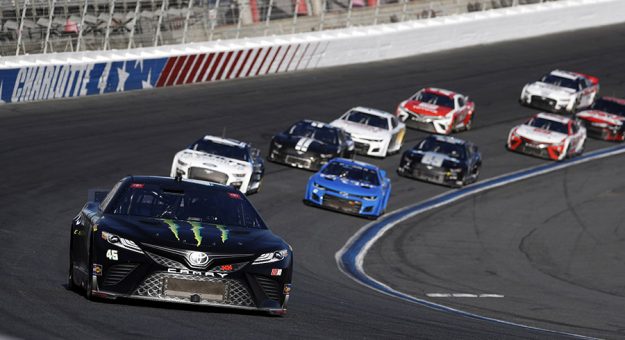Ownership
The resource in the hottest demand over the last year in NASCAR wasn’t fresh tires, fuel or sheet metal.
It was charters.
Years after the system was introduced to give team owners more value, charters were seemingly the main topic of conversation in the fall of 2021.
They were also the biggest frustration for GMS Racing President Mike Beam.
“I’ve done a lot of things in my career, as far as negotiating stuff, and that has been a challenge,” Beam said. “It’s the damnedest thing I’ve ever seen in my life.”
Roughly eight years after GMS Racing broke into NASCAR in the Truck Series, it’s making its debut in the Cup Series. It’s doing so after buying controlling interest in Richard Petty Motorsports.
The Next Gen car is the main reason GMS is jumping into the premier series.
“We’ve waited for this, we kind of toyed with the idea of going Cup racing a couple of years ago,” Beam said. “(When) we knew for sure this car was coming, we kind of pulled back on it, because I just didn’t want to invest millions of dollars and then you have that (Gen 6 car) inventory. So we waited.”
But even after the team announced its intention to go Cup Series racing, it had to lock down a charter.
It wasn’t easy. Teams such as 23XI Racing, Trackhouse Racing and Kaulig Racing were all trying to secure the one thing that would guarantee them a starting spot in the Cup Series field.
Last June, Kaulig Racing went as far as reportedly paying Spire Motorsports roughly $10 million each to secure two charters.
“It kind of set the price, but boy, they leaped that price after that,” Beam said. “In the end the way we are approaching it is, you can lease it, but besides the Daytona 500 guaranteed (starting spot) … we would take that lease money and pay toward performance, right? So it’s a slippery slope here.”
23XI Racing wound up paying $13 million to Starcom Racing to secure a charter and no other team assets.
In the end, GMS went the same route Trackhouse Racing did when it bought Chip Ganassi Racing’s NASCAR assets. The team announced in early December it had bought out RPM and with it, its two charters.
The team will field Erik Jones in the No. 43 and Ty Dillon in the No. 42.
Left Behind?
When revolutionary changes come about, things get set aside.
In with the Next Gen car, out with the Gen 6 car.
Its departure marks the end of an era in stock car racing.
“(The Gen 6) cars are works of art,” Chris Gabehart, crew chief for Denny Hamlin, said in November. “There’s no such thing as perfection. And the people who build them could spend endless hours making them a little more perfect each and every minute of each and every day. And, you know, to a large degree that’s dying. I think it’s honestly unfortunate.”
The Next Gen car brings with it a more durable composite body, taking the place of the steel bodies that have defined the sport throughout its entire existence.
SPEED SPORT spoke with a current fabricator on a Cup Series team that made the playoffs last season about the new car’s impact on team members like him. We honored their request to speak with anonymity.
“A lot of (us) kind of hoped that it would fall flat on its face and not go through,” the fabricator said. “It’s like, everything I’ve done for 20-something years is worthless now. Like all the skill that I’ve developed and made myself one of the best body hangers, in my opinion, in our shop, I did the nicest work. Now that means nothing.”
As the Next Gen car neared, the fabricator became familiar with tools that could prove useful in the new era.
“I got really good with … Romer arms (a 3D measuring device) and scanners and stuff like that. So I’m pretty sure I’m gonna be all right,” they said. “But I think next year, I’m going to be in a QC (quality control) kind of role where when we get the panels, I’ll have to scan them.”
Brian Murphy, an assistant associate shop foreman for Stewart-Haas Racing, said it takes roughly two to three weeks to assemble a Next Gen car. It took two to three months to construct a Gen-6 car from the ground up.
“Initially, we thought you would just bolt these cars together and have a … perfectly legal car in the center of the tolerance. … But when we started to bolt the bodies together and things like that, it took a lot of work just to get them legal, let alone what we wanted.
“I think everybody’s kind of surprised … how much work it still takes to assemble these race cars.”
The Next Gen car is not a finished product. Teams, manufacturers and NASCAR will be finessing it throughout its inaugural campaign and beyond.
“When there is an issue, we as teams and NASCAR get together to discuss what could be better or what we like,” Murphy said. “It’s an ever-evolving process.” n
